Socio-Political Issues
 |
 |
 |
 |
 |
 |
 |
La Pira: A Catholic Communist - Part XI
In 1934, the ‘Mass of the Poor’
La Pira’s supporters make the breathtaking assertion that he actually instituted a new Mass in 1934. They describe it as a “Mass” specially adapted to the poor of Florence, with the participation of the congregation. Before analyzing this invention (which, as we will see, bears in many respects an uncanny resemblance to the Paul VI’s New Mass of 1969), we will examine the background of the personalities who bore the main responsibility for its creation.
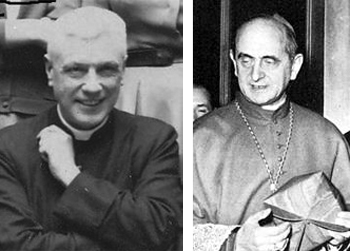 In the first place, it was through the friendship and support of Msgr. Montini, (1) the future Paul VI, that La Pira brought to fruition his plan to devise the “Mass of the Poor” in 1934. This was the year in which Montini placed La Pira under the tutelage of Don Raffaele Bensi, a parish priest of Florence who is credited with having influenced thousands of young people as chaplain to the youth section of Catholic Action. He was also considered the moving force behind some of the most radical and dissident priests of Florence. (2)
In the first place, it was through the friendship and support of Msgr. Montini, (1) the future Paul VI, that La Pira brought to fruition his plan to devise the “Mass of the Poor” in 1934. This was the year in which Montini placed La Pira under the tutelage of Don Raffaele Bensi, a parish priest of Florence who is credited with having influenced thousands of young people as chaplain to the youth section of Catholic Action. He was also considered the moving force behind some of the most radical and dissident priests of Florence. (2)
La Pira was already acquainted with Fr. Bensi since 1926, according to a contemporary, Raffaello Torricello, who knew them both very well. (3)
Montini’s choice of a spiritual advisor and collaborator for La Pira was significant. Fr. Bensi presents an interesting profile as an undeniably political priest who attended the socialist-orientated study weeks in Camaldoli inaugurated by Montini in 1934. He also occupied – in contravention of Canon Law which forbids clerics from holding public office – a post in the Ente Comunale di Assistenza, a public welfare organization for the relief of the poor, a position secured for him by La Pira, who was its President.
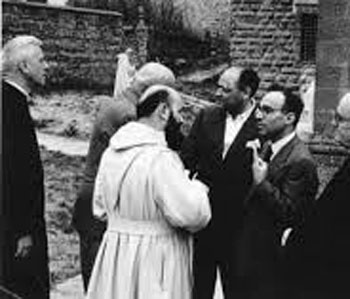 Fr. Bensi used to host regular meetings at his church for radical activists. Among the topics for discussion were plans to form a mass movement among the poor with a view to changing the social order. It was during one of those meetings that, according to La Pira’s supporters, “it was decided to institute a Sunday Mass” to “unite” the poorest citizens of Florence in their search for social justice.
Fr. Bensi used to host regular meetings at his church for radical activists. Among the topics for discussion were plans to form a mass movement among the poor with a view to changing the social order. It was during one of those meetings that, according to La Pira’s supporters, “it was decided to institute a Sunday Mass” to “unite” the poorest citizens of Florence in their search for social justice.
Who among the group would have the effrontery to institute a new Mass? All that was required was a person of an egomaniacal disposition with sufficient hubris to replace the Mass instituted by Christ with a new creation. La Pira rose to that challenge. At the instigation of Fr. Bensi, who was a close friend of Montini, he created the “Mass of the Poor” in 1934 which was thereafter enacted every Sunday at the church of San Procolo (and later at the Badia Monastery) in Florence. (4)
La Pira: The ‘Mass of the poor’ is an ‘adventure’
La Pira always regarded his “Mass” as his own “project” and was keen that he should be regarded as its progenitor. He explained its origins:
"It should be said at once that the Holy Mass of the poor in San Procolo and the Badia was rooted in an intense desire for a Christian 'adventure' of faith and charity."
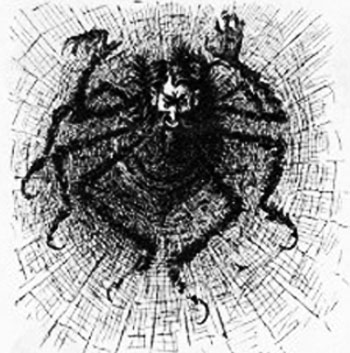 But it was evidently not the faith of the Church to which he was referring, for he admitted that the rationale behind the “adventure” was class-based:
But it was evidently not the faith of the Church to which he was referring, for he admitted that the rationale behind the “adventure” was class-based:
“It was born of the need to render our Christianity less ‘bourgeois’.”
We may well conclude from this statement that La Pira’s motives were rooted in Naturalism and that he created this “Mass” because of his thirst for organizing a social revolution according to his faith in Karl Marx.
This conclusion can also be applied to Fr. Bensi who planted in La Pira’s mind the idea of a new Mass. And behind Fr. Bensi was their “Svengali”, Msgr. Montini, who lured, dominated and manipulated them both, and actually did create a new Mass in 1969.
Svengali is a character in George du Maurier’s novel, Trilby, who seduces, dominates and exploits a young English girl to turn her into a great singer. The word “svengali” has come to mean a person who manipulates or controls another as by some mesmeric or sinister influence.
Above right you can see an illustration of Svengali as a spider in his web from the novel by Georges DuMaurier, 1895. Any visual resemblance to Montini is purely coincidental.
The ‘Mass of the Poor’ prepared the Novus Ordo Mass
La Pira outlined the main features of his “Mass” as follows:
"After the reading of the Gospel a few words were spoken, then, came a few prayers and the Mass ended. A basket of fresh bread was taken up to the Altar. The bread was blessed, everyone joined in an Our Father, and the bread was distributed in an orderly fashion."
La Pira stressed the full participation of the congregation in his “Mass.” (5) We have an eye-witness account by Raffaelo Torricelli, who was a frequent visitor to the San Procolo experiment, that the prayers were led by La Pira and recited in common by the congregation. (6)
What exactly La Pira meant by “blessed” bread is not clear, but he definitely identified the service with the “Eucharist”:
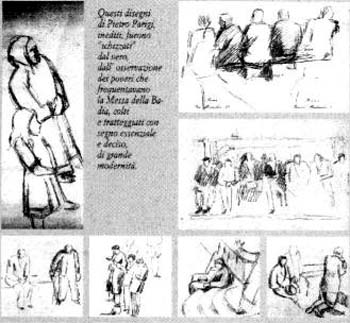 "That structure of the Holy Mass at the Badia, understood as a Communion in Christ of all the creatures endowed in their different ways by God, must remain the central idea of our work: because what is the fundamental necessity of our time? What indeed is the core idea of Christianity, the central organic necessity, the idea at the center of community living?
"That structure of the Holy Mass at the Badia, understood as a Communion in Christ of all the creatures endowed in their different ways by God, must remain the central idea of our work: because what is the fundamental necessity of our time? What indeed is the core idea of Christianity, the central organic necessity, the idea at the center of community living?
"The Eucharist, which is the core of Christianity, the sacrament of unity; in this we bring together the diversely dressed stones that are destined to be part of a single building."
He also described all the members of the congregation as “communicants” in the “sacrament of love.” But where was the priest in this so-called “Mass”? If there was one, no mention was made of his presence – indeed he would seem redundant in this lay-led service – for Torricelli, who had witnessed the proceedings, was convinced that the real protagonists were La Pira and the crowd of down-and-outs who filled the benches. (7)
The 'Mass of the Poor' as a political rally
In a 1943 article written shortly after his participation in the Camaldoli Conference, La Pira explained at length the thinking behind the original San Procolo project. (8)
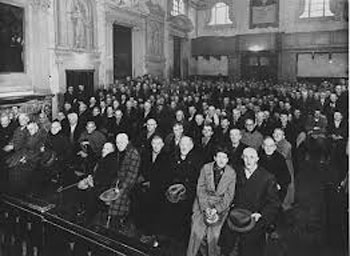 He spoke of recruiting the poor (reclutare i poveri) in the church of San Procolo with the intention of imbuing them with a collective mentality (si trattave de creare uno stato d’animo religioso 'collective'). He also spoke of turning the whole parish into a revolutionary cell called the Republic of San Procolo (Repubblica di San Procolo) where the poor would be “united” under the leadership of an elite group of intellectuals, artists and professionals.
He spoke of recruiting the poor (reclutare i poveri) in the church of San Procolo with the intention of imbuing them with a collective mentality (si trattave de creare uno stato d’animo religioso 'collective'). He also spoke of turning the whole parish into a revolutionary cell called the Republic of San Procolo (Repubblica di San Procolo) where the poor would be “united” under the leadership of an elite group of intellectuals, artists and professionals.
We know from Torricelli’s account that La Pira gave a speech from the altar on social and political issues that gained the support of the congregation.(9) It was a brazen example of political opportunism, a cynical attempt to take advantage of a vulnerable group of the city’s destitute poor.
It is particularly significant that the “poor” for whom the “Mass” was created were not interested in social revolution; nor did they experience the least desire to be “united” as a class. In fact, they had to be bribed to come to the church in the first place with the promise of free food. (10)
A few years after the inauguration of his “Mass of the Poor” in Florence, La Pira took it to Rome where, under the watchful eye of Mgr. Montini in the Vatican, he set it up in the church of San Girolamo della Carità. (11)
The condemnation
By instituting a new “Mass,” La Pira and his progressivist zealots - hell-bent on destroying the divine institution of the Church and the priesthood - placed themselves on a par with the heresiarchs of the Pseudo-Reformation who had the same objective in mind.
It is certain that no Pope in the History of the Church before Vatican II would have countenanced the introduction of a Novus Ordo Missae. Indeed, Gregory XVI in Mirari vos, gives the following reason to condemn it:
“Indeed these authors of novelties consider that a ‘foundation may be laid of a new human institution,’ and what St. Cyprian detested may come to pass, that what was a divine thing ‘may become a human church.’” (August 15, 1832)
Continued

Posted September 23, 2013

Montini appointed his protégé Don Bensi, left, as La Pira's spiritual director
La Pira was already acquainted with Fr. Bensi since 1926, according to a contemporary, Raffaello Torricello, who knew them both very well. (3)
Montini’s choice of a spiritual advisor and collaborator for La Pira was significant. Fr. Bensi presents an interesting profile as an undeniably political priest who attended the socialist-orientated study weeks in Camaldoli inaugurated by Montini in 1934. He also occupied – in contravention of Canon Law which forbids clerics from holding public office – a post in the Ente Comunale di Assistenza, a public welfare organization for the relief of the poor, a position secured for him by La Pira, who was its President.

Fr. Bensi, far left, had great influence over La Pira, right; both are here at a Camaldoli meeting
Who among the group would have the effrontery to institute a new Mass? All that was required was a person of an egomaniacal disposition with sufficient hubris to replace the Mass instituted by Christ with a new creation. La Pira rose to that challenge. At the instigation of Fr. Bensi, who was a close friend of Montini, he created the “Mass of the Poor” in 1934 which was thereafter enacted every Sunday at the church of San Procolo (and later at the Badia Monastery) in Florence. (4)
La Pira: The ‘Mass of the poor’ is an ‘adventure’
La Pira always regarded his “Mass” as his own “project” and was keen that he should be regarded as its progenitor. He explained its origins:
"It should be said at once that the Holy Mass of the poor in San Procolo and the Badia was rooted in an intense desire for a Christian 'adventure' of faith and charity."

Like the Svengali, above, Montini placed himself at the center of a web of socialist intrigue
“It was born of the need to render our Christianity less ‘bourgeois’.”
We may well conclude from this statement that La Pira’s motives were rooted in Naturalism and that he created this “Mass” because of his thirst for organizing a social revolution according to his faith in Karl Marx.
This conclusion can also be applied to Fr. Bensi who planted in La Pira’s mind the idea of a new Mass. And behind Fr. Bensi was their “Svengali”, Msgr. Montini, who lured, dominated and manipulated them both, and actually did create a new Mass in 1969.
Svengali is a character in George du Maurier’s novel, Trilby, who seduces, dominates and exploits a young English girl to turn her into a great singer. The word “svengali” has come to mean a person who manipulates or controls another as by some mesmeric or sinister influence.
Above right you can see an illustration of Svengali as a spider in his web from the novel by Georges DuMaurier, 1895. Any visual resemblance to Montini is purely coincidental.
The ‘Mass of the Poor’ prepared the Novus Ordo Mass
La Pira outlined the main features of his “Mass” as follows:
"After the reading of the Gospel a few words were spoken, then, came a few prayers and the Mass ended. A basket of fresh bread was taken up to the Altar. The bread was blessed, everyone joined in an Our Father, and the bread was distributed in an orderly fashion."
La Pira stressed the full participation of the congregation in his “Mass.” (5) We have an eye-witness account by Raffaelo Torricelli, who was a frequent visitor to the San Procolo experiment, that the prayers were led by La Pira and recited in common by the congregation. (6)
What exactly La Pira meant by “blessed” bread is not clear, but he definitely identified the service with the “Eucharist”:

Pietro Parigi promoted La Pira's Mass with drawings to show "the oppression of the people"
"The Eucharist, which is the core of Christianity, the sacrament of unity; in this we bring together the diversely dressed stones that are destined to be part of a single building."
He also described all the members of the congregation as “communicants” in the “sacrament of love.” But where was the priest in this so-called “Mass”? If there was one, no mention was made of his presence – indeed he would seem redundant in this lay-led service – for Torricelli, who had witnessed the proceedings, was convinced that the real protagonists were La Pira and the crowd of down-and-outs who filled the benches. (7)
The 'Mass of the Poor' as a political rally
In a 1943 article written shortly after his participation in the Camaldoli Conference, La Pira explained at length the thinking behind the original San Procolo project. (8)

Poor people at San Procolo, above, were indoctrinated with communist ideas by La Pira
We know from Torricelli’s account that La Pira gave a speech from the altar on social and political issues that gained the support of the congregation.(9) It was a brazen example of political opportunism, a cynical attempt to take advantage of a vulnerable group of the city’s destitute poor.
It is particularly significant that the “poor” for whom the “Mass” was created were not interested in social revolution; nor did they experience the least desire to be “united” as a class. In fact, they had to be bribed to come to the church in the first place with the promise of free food. (10)
A few years after the inauguration of his “Mass of the Poor” in Florence, La Pira took it to Rome where, under the watchful eye of Mgr. Montini in the Vatican, he set it up in the church of San Girolamo della Carità. (11)
The condemnation
By instituting a new “Mass,” La Pira and his progressivist zealots - hell-bent on destroying the divine institution of the Church and the priesthood - placed themselves on a par with the heresiarchs of the Pseudo-Reformation who had the same objective in mind.
It is certain that no Pope in the History of the Church before Vatican II would have countenanced the introduction of a Novus Ordo Missae. Indeed, Gregory XVI in Mirari vos, gives the following reason to condemn it:
“Indeed these authors of novelties consider that a ‘foundation may be laid of a new human institution,’ and what St. Cyprian detested may come to pass, that what was a divine thing ‘may become a human church.’” (August 15, 1832)
Continued
- La Pira first met Msgr. Montini in 1922, and their friendship lasted for the rest of their lives. It is pertinent to recall here that Montini himself had been a pioneer in the liturgical movement from 1925 to 1933 when, as national chaplain to the Italian Catholic University Federation (FUCI), he introduced students to a more “democratic” style of participation in the Mass, which was linked with social action. But even when he was forced to resign his FUCI post in 1933, his subversive work of reforming the Church went on with increased intensity with results that are already history.
- Chief among these were Fr. Lorenzo Milani and Fr. Ernesto Balducci.
- Raffaello Torricello, Don Bensi. Con testimazione coordinate da R.T., Edizioni Polistampa Firenze, Florence, 1997, pp. 28-29.
- The church of the Benedictine Abbey of the Badia, also known as Santa Maria di Firenze, is the oldest monastery in Florence; its foundation dates from the year 978.
- “La santa Messa viene seguita in modo che tutti vi partecipino con preghiere e con canti” [The Holy Mass is followed in such a way that all participate with prayers and songs] Quoted in Giancarlo Gallici, Scritti Vincenziani, Città Nuova Editrice, 2007 p. 152
- Raffaello Torricelli, ‘I tempi fiorentinini que hanno segnato la vita de Giorgio La Pira e quella di Firenze’, in Caro Giorgio, Caro Amintore, 25 Anni di Storia nel Carteggio La Pira-Fanfani, Editione Polistampa, Florence, 2003, pp. 10-12
- R. Torricelli, op. cit., p. 12: “Quale gratia era partecipare a questo settimanale incontro con gli “accattoni” e i miserabili que con La Pira erano i veri protagonisti” [What a grace it was to participate in that weekly meeting with non-Catholics and the poor, who with La Pira were the real stars].
- Giorgio La Pira, ‘La Messa di San Procolo’ in Rivista dei giovani, 24, no. 9, September 1943, pp. 203-207 quoted in Giancarlo Gallici, , op. cit., p. 150
- Torricelli recorded that “Questa povera gente...ascoltava, annuiva...” [These poor people...listened, nodded…] ibid.
- G. Gallici, op. cit., pp. 151-2
- “La Pira personally established in the church of San Girolamo della Carità the Messa del povero, which he had conceived a few years earlier in Florence.” Giulio Andreotti, ‘Attualita di la Pira’, 30 Giorni, 10, October 2002

Posted September 23, 2013
______________________
______________________











